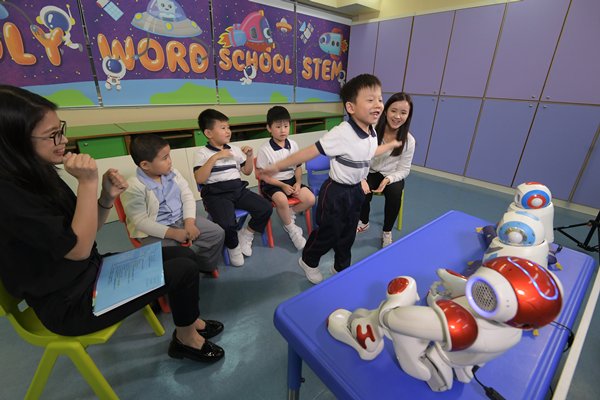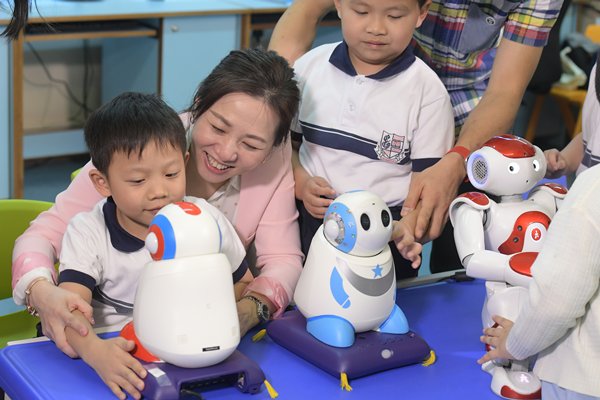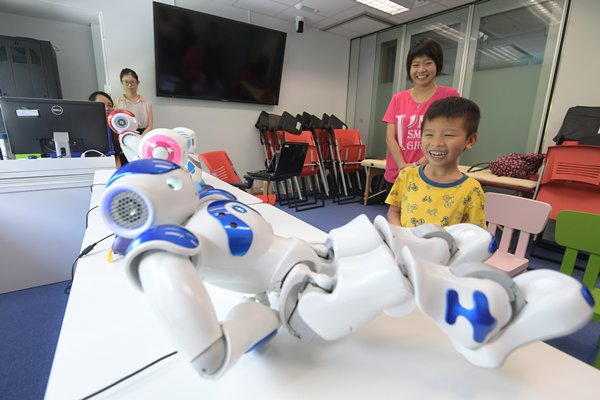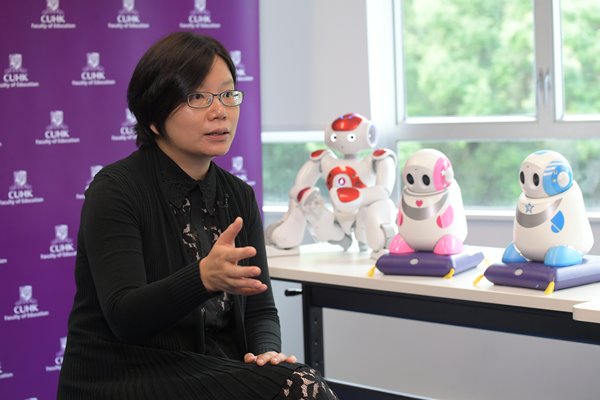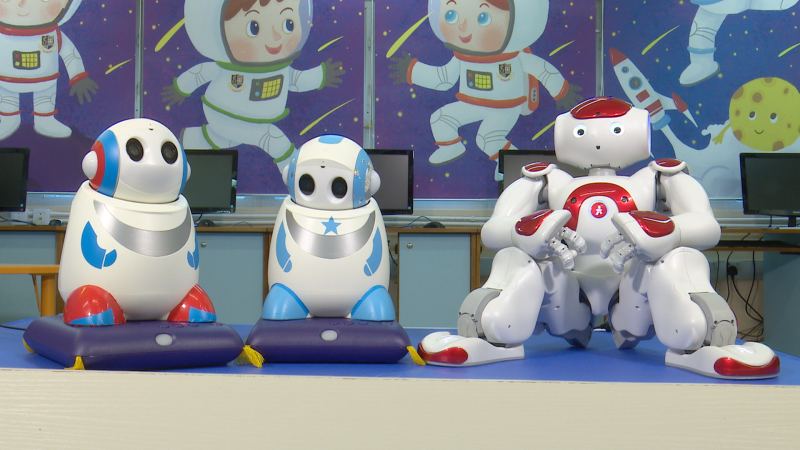Enhancing learning with robots
A robot drama education programme, funded by the Innovation & Technology Fund for Better Living, will help children diagnosed with Autism Spectrum Disorder.
Developed by the Chinese University Department of Educational Psychology, the programme helps improve autistic kids’ communication and social skills.
It aims to reach 900 children by 2021.
Stimulating learning
Autistic children taking part in the programme watch the robots perform gestures, listen to them talk, then imitate them.
Evangelize China Fellowship Holy Word School is one of the schools that has joined the programme. Its principal Carrie Lam said the key to the programme is that children are fully engaged in the learning process.
“For example, all the learning time, they want to touch the robots and listen to the robot’s instruction and to imitate the robot, what did the robot say.
“They learn the skills and then they can apply these skills (at) home and in school, as well as they can communicate with their classmates, with the teachers using these skills.”
Ms Lam also believes robot drama education can stimulate autistic children’s interest in learning, with the added bonus of providing them with a comfortable and interactive learning environment.
She explained autistic children can feel threatened by human facial expressions.
“Robots just have two eyes and a nose. Children with Autism Spectrum Disorder would like to see them, to keep their eyes on the social robots. So it could enhance the learning timing in order to enhance the effectiveness of learning.”
Social interaction
Chinese University Department of Educational Psychology Associate Professor Catherine So and her team developed the unique programme which uses dramas to teach autistic children the appropriate behaviour for different social situations.
Twenty dramas, including those based on scenarios such as waiting for a late bus or queuing to buy snacks at school, have already been developed.
Ms So said: “In one scenario, buses being late. So, maybe typical children even though they may not be autistic, they may also find it annoying why the bus is being late.
“However, for autistic children, they have different issues. The bus is being late. So, it is not according to their routine, it is not following their schedule. So that is why they will feel anxious.
“They may scream, they may yell. The (robot) mother will explain the rationale behind this scenario. We would like to reduce these kind of problem behaviours.”
Doron has taken part in the programme and his mother has already noticed a positive change - his eating habits have improved.
She said: “He did not want to eat cucumbers before. But after taking part in the robot drama he said, ‘Mummy, I remember the robot said cucumbers are healthy for me, I want to try them now.’
“I am surprised that he wants to give them a try and he will eat cucumbers now.”
Proven routine
The Chinese University team has been developing the programme since 2015 and discovered the robots also help reduce autistic children’s anxiety.
Ms So said children with autism prefer learning in a routine manner and that they like the materials to be repetitive and predictable.
“Human therapists will be difficult to follow the same routine or to follow the same content in every lesson. But social robots could help us to do that.
“And also, another thing is that social robots could create a platform in which the children can learn new materials in a predictable and also in a less anxious environment.”
She added that government funding enables the team to help more of these children.
Launched in 2017 with an allocation of $500 million, the Innovation & Technology Fund for Better Living subsidises projects aimed at improving people’s daily lives or benefiting specific community groups through the use of innovation and technology.
As of mid-November, the fund approved 16 applications amounting to about $50 million in grants.
